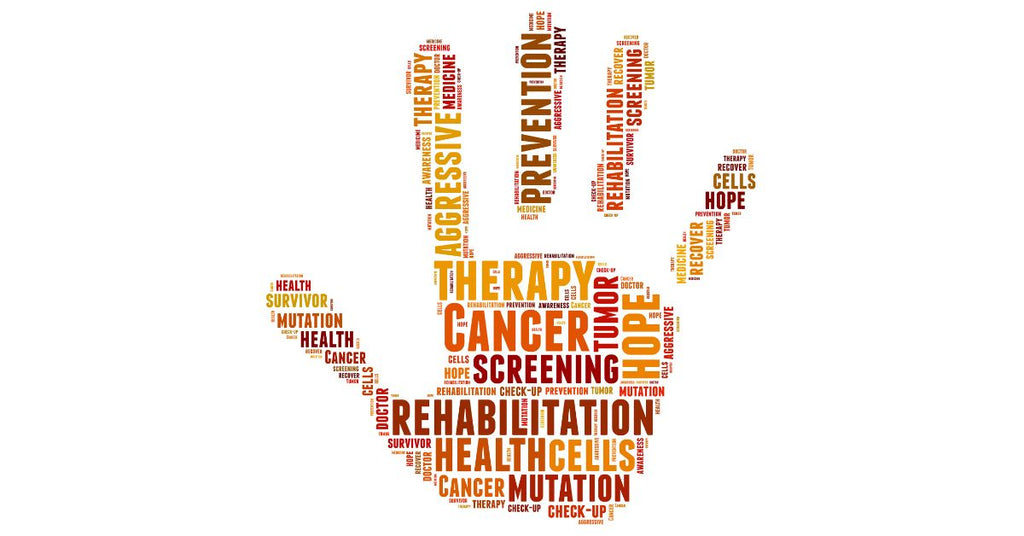Do You Know the Symptoms of Ovarian Cancer?

Here are some facts about ovarian cancer from the American Cancer Society.
- It ranks fifth in cancer deaths among women
- It accounts for more deaths than any other cancer of the female reproductive system
- A woman’s risk of getting ovarian cancer during her lifetime is about 1 in 78
- A woman’s lifetime risk of dying from ovarian cancer is about 1 in 108
- About 19,710 women will receive a new diagnosis of ovarian cancer in 2023
- About 13,270 women will die from ovarian cancer in 2023
- A significant number of women do not feel confident they could identify or recognize the symptoms of ovarian cancer
These statistics don’t count low malignant potential ovarian tumors.
The Ovaries
But let’s step back for a minute and talk about the ovaries themselves.
Ovaries are a part of the female reproductive system. They’re a pair of glands located on either side of the uterus where eggs are made during a woman’s reproductive years. The eggs – or ova – travel from the ovaries through the fallopian tubes to the uterus. The ovaries are also the main source of estrogen and progesterone.

Ovarian Cancer
Cancer starts when cells in the body begin to grow out of control. This can happen anywhere in the body, but ovarian cancer occurs when it happens in the ovaries. Traditionally, ovarian cancer was believed to only begin in the ovaries. However, new evidence suggests that many ovarian cancers may actually begin in the fallopian tubes, according to the American Cancer Society. Research is ongoing.
The cause of ovarian cancer is unknown, but we do know there are factors that play a significant role – like inflammation, trauma to the ovaries, genetics and the environment.
Warning Signs
One of the scary things about ovarian cancer is that the early warning signs can be easy to ignore and difficult to distinguish from other issues. This is one of the reasons that ovarian cancer so often goes undetected until stage 3 or 4 when it’s more difficult to treat.
It’s imperative that we know the normal of our own bodies so that we will notice changes. When it comes to ovarian cancer, here’s what we’re looking for:
-
Chronic bloating & increased abdominal size
You may notice swelling in the lower pelvis or abdomen and clothes around the waist may feel tighter than normal
- Sudden changes in bowel or urine habits
-
New pelvic or abdominal pain
Abdomen, back, or pelvis
-
Trouble eating or feeling full quickly
Feeling full after eating only a few bites or loss of appetite
- Urinary frequency

Less common symptoms of ovarian cancer:
- Pain during sex
-
Back pain
Pain or discomfort in the lower back
-
Fatigue
More tired more frequently
-
Menstrual changes
Including additional bleeding or vaginal discharge
-
Upset stomach, heartburn, or constipation
May include diarrhea or changes in bowel habits such as urgency or pain
Most of us will experience some of these symptoms from time to time – like when we travel or after eating a heavy meal. It’s when we experience them for the better part of two weeks or when changes have become our new normal that we should seek medical care.
Early Detection
A low percentage of ovarian cancers are found at an early stage – about 20%. But when it’s discovered early, about 94% of patients live longer than 5 years after their diagnosis. So, early detection is important, but is it possible?
Unfortunately, there are no current definitive tests for ovarian cancer. Our best chance for early detection is awareness of our bodies, recognition of the symptoms of ovarian cancer, and decisive action, in the form of an exam by a medical professional, if we experience them almost daily for more than two weeks.

To make symptoms of ovarian cancer easier to remember, some doctors use the acronym “BEACH”:
Bloating
Early satiety (feeling full quickly)
Abdominal pain
Changes to bowel or bladder habits
Heightened fatigue
Am I At Risk?
It’s also important to know what puts us at risk for ovarian cancer. Some of the risks are beyond our ability to control, like age and genetic predisposition. However, there are some choices we can make to lower our risk. Resources for the following list include the American Cancer Society and the National Ovarian Cancer Coalition.
-
Age
Risk increases with age. Most ovarian cancer develop after menopause and it’s rare in women under 40. Half of all ovarian cancers are found in women 63 year or older.
-
Overweight or obese
It’s believed that obesity may increase the risk of developing cancers, but the link with ovarian cancer, in particular, is unclear. Still, there is a potential for risk of an ovarian cancer diagnosis when BMI is 30 or higher – as well as a negative impact on survival.
-
Childbirth later in life or never having a full-term pregnancy
“Later in life” in this context means over age 35 -
Hormone replacement therapy
Women using HRT after menopause (estrogen or estrogen & progesterone) have an increased risk of developing ovarian cancer – when compared to women who have never used hormones -
Family history of ovarian cancer
Your risk for developing ovarian cancer if your mother, sister, or daughter have ovarian cancer or a history of it. But the risk can also come from your father’s side. According to the American Cancer Society, the more relatives you have with ovarian cancer, the higher your risk. -
Having a family cancer syndrome
Inherited changes in certain genes called mutations can result in a family cancer syndrome. Up to 25% of ovarian cancers are part of a family cancer syndrome. Examples of family cancer syndromes include: Hereditary Breast & Ovarian Cancer Syndrome (HBOC); Hereditary Nonpolyposis Colon Cancer (HNPCC); Peutz-Jeghers Syndrome; MUTYH-Associated Polyposis. -
Family history of breast cancer or colorectal cancer
A family history of other types of cancer, like breast and colorectal, are linked to an increased risk for ovarian cancer. Both breast and colorectal cancer can be caused by an inherited mutation in certain genes that cause a family cancer syndrome which, in turn, can cause ovarian cancer. -
A personal history of breast cancer
A woman who has had breast cancer may be at an increased risk for developing ovarian cancer. This risk is highest in women with a family history of breast cancer. -
An inherited genetic mutation (BRCA1, BRCA2)
A strong family history of breast cancer may be caused by an inherited mutation in the BRCA1or BRCA2 genes and HBOC (hereditary breast and ovarian cancer syndrome), which is linked to an increased risk of ovarian cancer. -
Fertility treatment
Some studies have not shown an increased risk of invasive ovarian cancer with fertility drugs. However, there seems to be a link between IVF fertility treatment and ovarian tumors known as “borderline” or “low malignant potential”. -
Smoking
Smoking has been linked to an increased risk for the mucinous type of ovarian cancer.
While the presence of one or more risk factors may increase a woman’s chance of developing ovarian cancer, it does not necessarily mean that she will get it. Still, those with risk factors should be alert to symptoms and quick to follow up with a medical professional. We all need to empower ourselves with information about prevention, symptoms, and what to do if we suspect ovarian cancer or want to rule it out.
Good News
Ovarian cancer diagnoses have been on the decline. Between 1990 and the mid-2010s, the incidence rate dropped between 1% and 2% per year. The rate rose to 3% per year from 2015 to 2019. Some experts believe that increased use of oral contraceptives from the 60s forward and decreased menopausal hormone therapy during the 2000s contributed to the trend.
Fewer diagnoses and improved treatment have also led to a decline in ovarian cancer mortality. During the 2000s and early 2010s, ovarian cancer mortality declined 2% per year, but from 2016 to 2020, the rate increased to a 3% annual decline.
Good news indeed, but we have a long way to go in the fight against ovarian cancer. For one thing, we need an effective screening tool to make early detection easier. Until then, it's up to us to know our risks for developing ovarian cancer and to understand the symptoms. We can discuss our risk with our doctors now and be determined to follow up promptly in the event we experience symptoms.

More Information
There’s a lot to know about ovarian cancer and, fortunately, there are some good resources. Here are a few.

RESOURCES:
The Healthy, There’s a Link Between Ovarian Cancer & 2 Common Medications, Jaime Stathis, February 16, 2023
National Ovarian Cancer Coalition, What Is Ovarian Cancer
M.D. Anderson Cancer Center, ‘My first signs of ovarian cancer’: Signs to look for and when to see a doctor, Cynthia Demarco, November, 2, 2022
Cleveland Clinic, Ovarian Cancer, Cleveland Clinic Medical Professional, Last reviewed on: 11/14/2022
American Cancer Society, Ovarian Cancer, American Cancer Society medical and editorial content team
The Healthy (Reader’s Digest), 10 Common Myths About Ovarian Cancer You Need To Ignore, Charlotte Hilton Andersen, October 7, 2020


Leave a comment